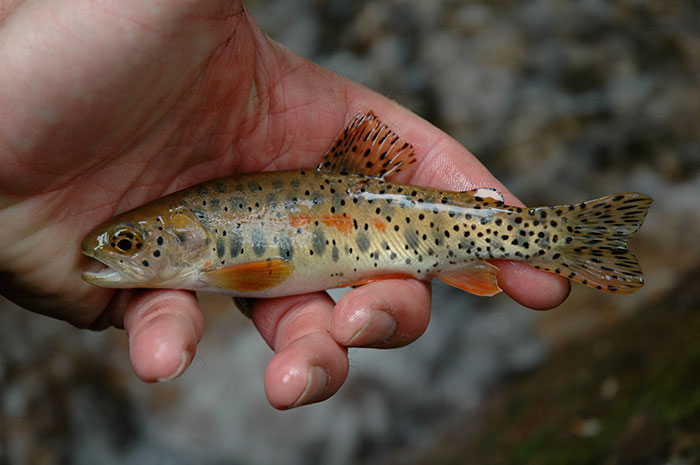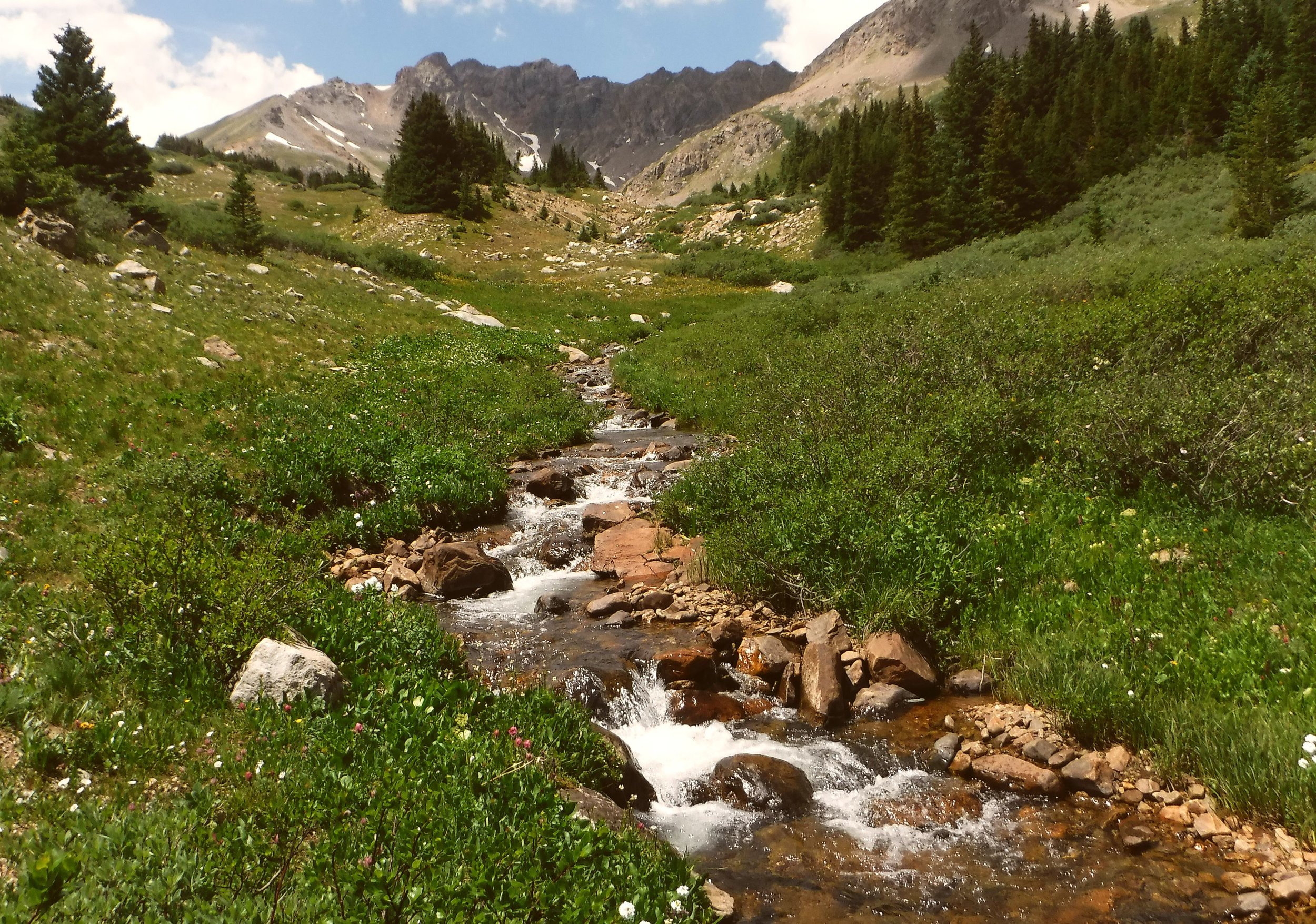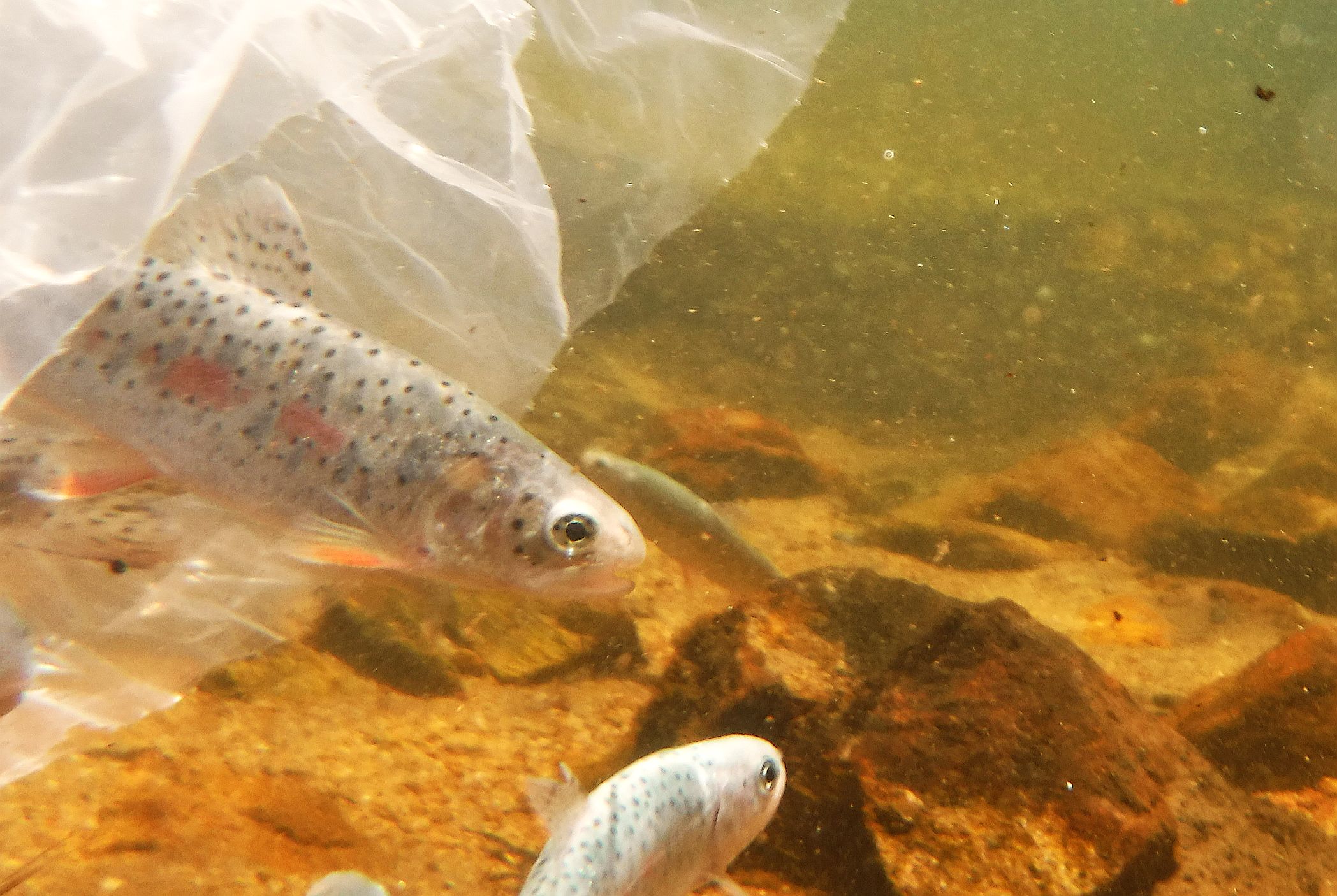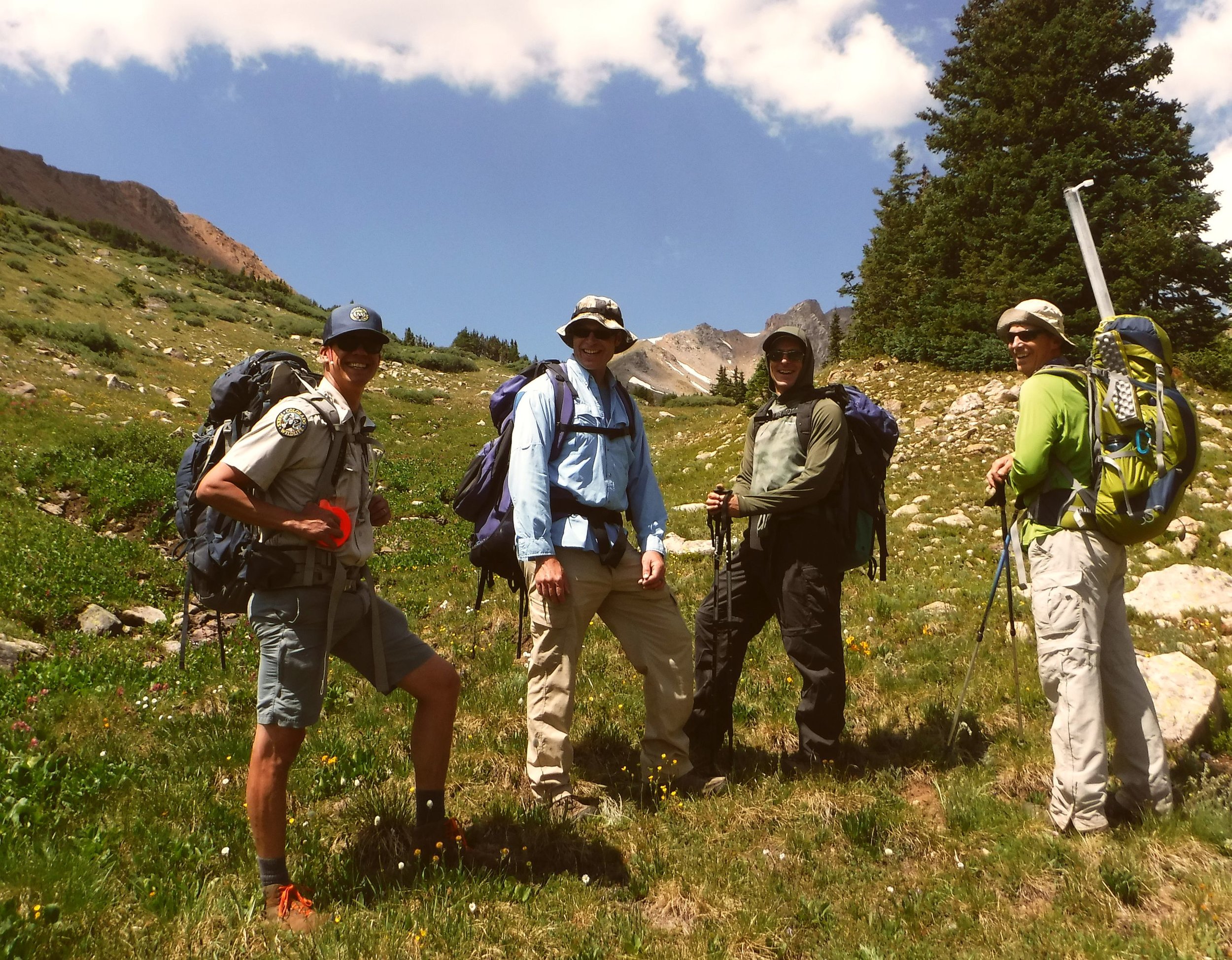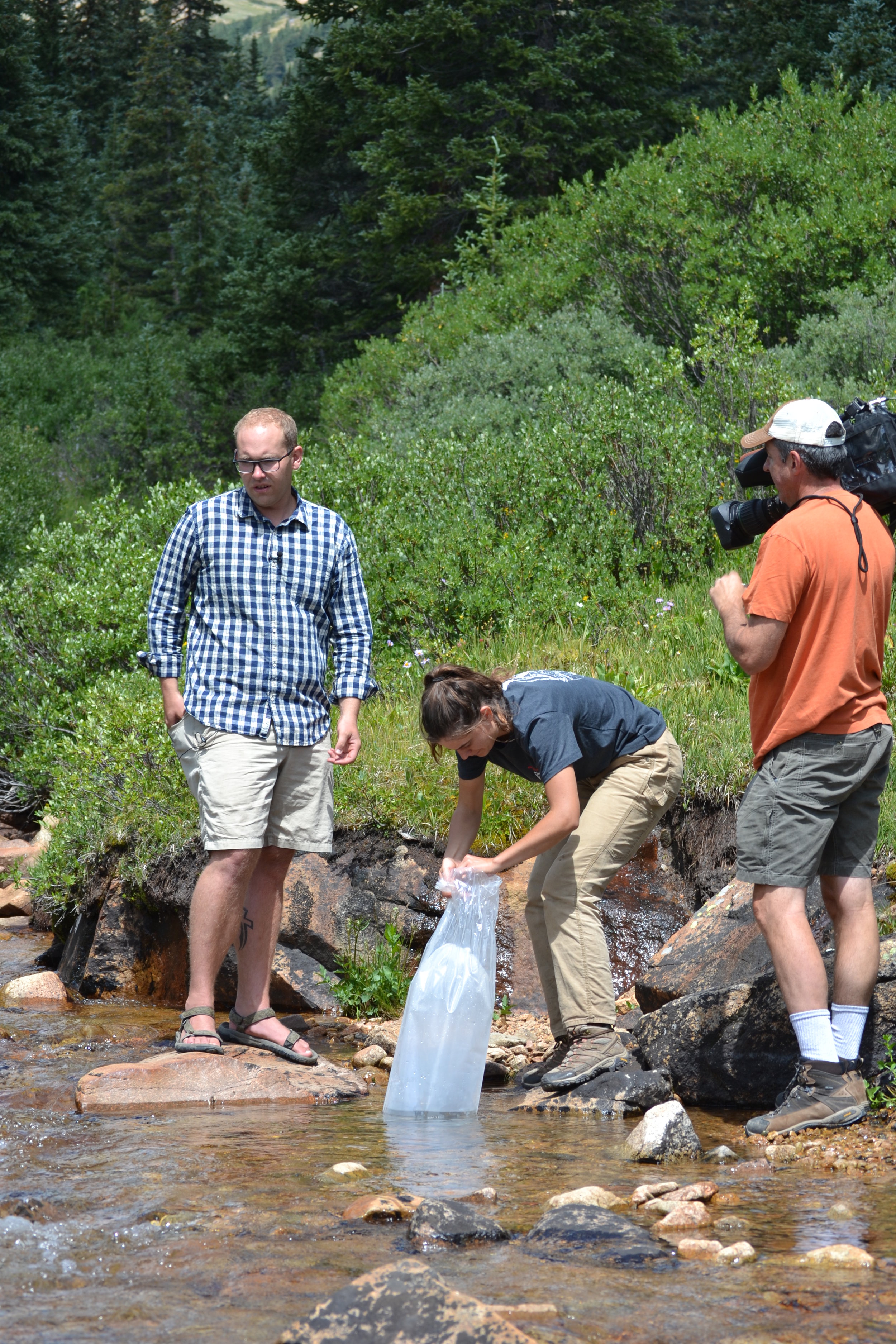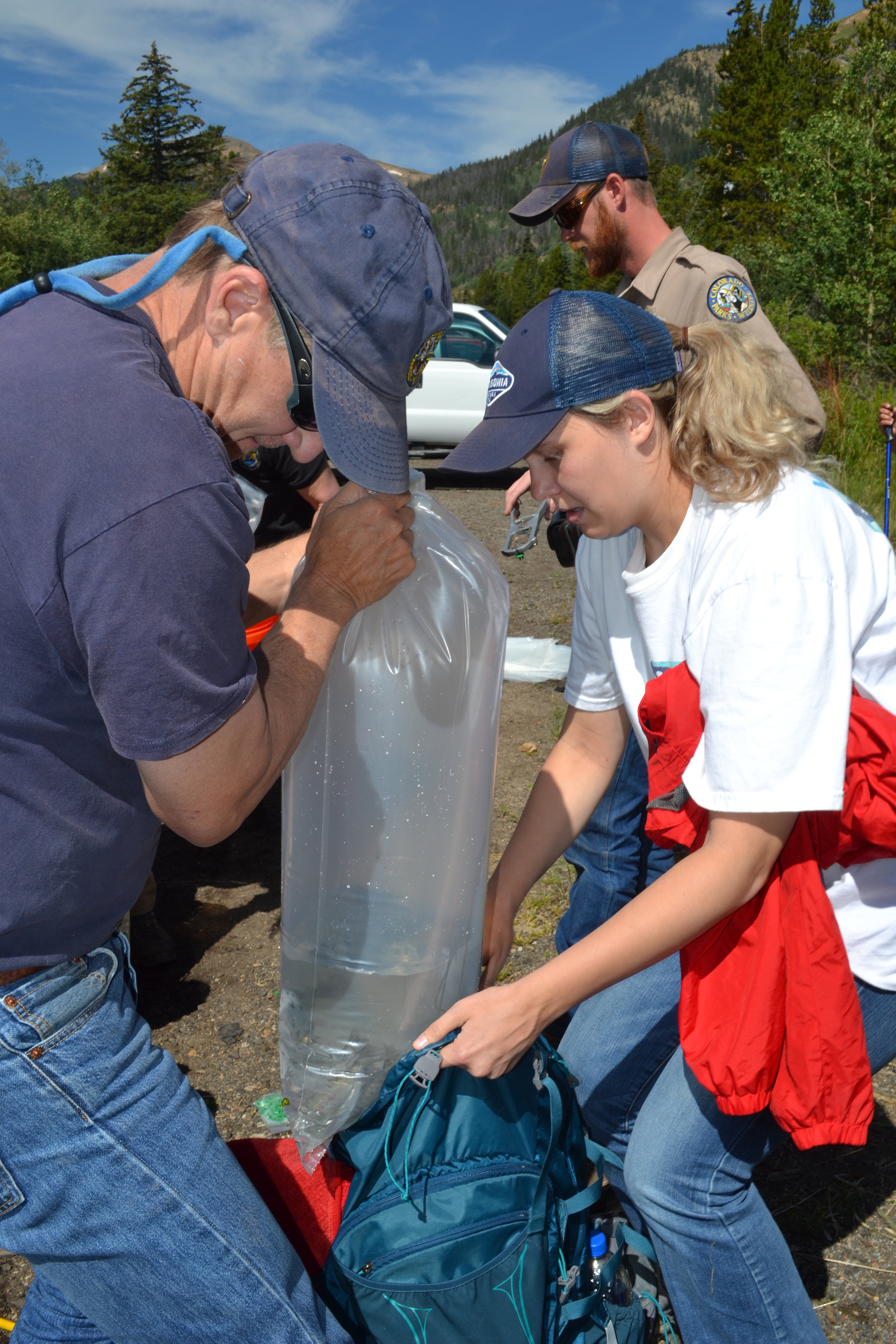Colorado Parks and Wildlife has found cutthroat trout that are unique to the San Juan River Basin in southwest Colorado. Photo courtesy of Colorado Parks and Wildlife.
Colorado Parks and Wildlife (CPW) biologists recently discovered a unique genetic lineage of the Colorado River cutthroat trout in southwest Colorado that was previously thought to be extinct. The discovery was officially recognized earlier this year thanks to advanced DNA testing techniques. Eight small populations of these trout have been found in isolated habitats on streams of the San Juan River Basin within the San Juan National Forest and on private property.
Based on two samples from 1874 and housed in the Smithsonian, researchers from the University of Colorado previously identified a Colorado River cutthroat trout lineage with genetic markers unique to the San Juan basin. Unfortunately, no modern populations of the lineage were known to remain at that time. CPW researchers and biologists, however, set out to test all the southwest Colorado cutthroat trout populations they could find to see if any carried the unique San Juan genetic fingerprint. Their efforts bore fruit with this year’s discovery of eight such small populations.
““We always ask ourselves, ‘What if we could go back to the days before pioneer settlement and wide-spread non-native fish stocking to see what we had here?’” ”
“Careful work over the years by biologists, finding those old specimens in the museum and the genetic testing gave us the chance, essentially, to go back in time. Now we have the opportunity to conserve this native trout in southwest Colorado.” said CPW biologist, Jim White.
Colorado TU and the Five Rivers Chapter stand to play a key role in the story of these fish going forward. “This is far and away the most exciting thing to happen to southwest native trout in my lifetime,” said TU representative Garrett Hanks of Durango. “I am excited to participate in the future of the San Juan cutthroat trout – from headwaters to the high desert.”
TU has a track record of partnership in successful native fish restoration projects in the region, working closely with CPW and the San Juan National Forest. Among other projects, the partners have collaborated to restore Colorado River cutthroat trout into the headwaters of the Hermosa Creek watershed – building barriers to secure fish from downstream invasion by non-natives, improving stream and riparian habitat, and helping with reintroduction efforts. The discovery of remnant San Juan lineage fish opens the door for new restoration efforts into additional, suitable habitats.
“We’ve appreciated the chance to work with such great partners to conserve native trout in southwest Colorado,” said CTU Executive Director David Nickum. “It is nothing less than remarkable to now have the chance to join them in restoring a fish we thought had been lost to extinction.”
Biologists have already had to sweep into action to protect the rare, newly-found cutthroats. Two populations were in areas impacted by the 416 fire this summer, and fish were salvaged from those habitats to preserve their unique genetic stocks before they could be lost to post-fire ash flows.
A fish barrier installed to protect Hermosa Creek native trout, through a partnership including the San Juan National Forest, Colorado Parks and Wildlife, and Trout Unlimited. More such projects will be needed to secure homes for the newly-rediscovered San Juan lineage cutthroat.









